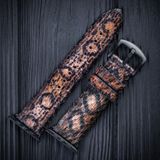Leather is one of the oldest materials used by humanity to produce various items since ancient times. In every culture, leather goods had their own purpose and symbolism, helping people survive and express their cultural heritage.
In this article, we will explore the traditions of using leather goods in different cultures around the world and examine the role they play in shaping national culture.
Leather Goods in European Cultures
In Europe, leather has always held special significance as a material for clothing and footwear. Notable records of leather production in Europe date back to the times of the Roman Empire, when the craft of leatherworking was perfected.
During the Middle Ages, leather became a symbol of social position. Leather clothing and footwear were only accessible to the upper echelons of society, signifying their social status and wealth. Such items became not only indicators of social status but also symbols of luxury.
In modern times, leather remains a popular material for clothing and footwear in Europe. It is particularly popular in fashion trends and is understood as a symbol of style and elegance. However, unlike the Middle Ages, leather has become more accessible, allowing a wider range of people to use this material for their needs.
Leather Goods in Asian Cultures
In Asian cultures, leather holds a special place in history and traditions. In some cultures, such as India and Japan, leather has been used as a material for producing traditional clothing, such as kimonos and saris.
In Japan, leather goods were significant for the samurai, who used them for their armor and protection. Additionally, in Japan, leather was traditionally used for the production of fans, which were considered symbols of power and might.
In China, leather goods were used for producing weaponry, as well as for making books and calendars. In Mongolian culture, leather was utilized for crafting traditional attire called 'deel'.
In contemporary Asia, leather goods still hold great cultural significance. They are used in the production of traditional and fashionable clothing, footwear, and accessories. Leather is also employed in the arts to create impressive masterpieces, such as Chinese leather-bound books.
Leather Goods in African Cultures
Leather holds significant importance in traditional African cultures. Let's consider a few examples:
-
In Maasai culture, found in Kenya and Tanzania, leather is used to create costumes for dances, clothing, and footwear. Additionally, they use animal hides to construct their huts.
-
In the traditional culture of the San people, residing in the Kalahari Desert, leather is used for crafting traditional musical instruments such as drums and wind instruments.
-
In Zulu culture, located in South Africa, leather is utilized for creating traditional masks and attire.
-
In Tuareg society, inhabiting the Sahara Desert, leather is used to fashion clothing and footwear that protect against the harsh sun and sand.
In modern Africa, leather continues to be a significant material for producing traditional and fashionable clothing and footwear. It is also used in the arts to create striking sculptures and paintings.
Leather Goods in Latin American Cultures
In Latin American cultures, leather holds vital importance in traditional customs. In traditional Mexican culture, leather is used to produce traditional clothing and footwear such as sombreros and huaraches.
In Chilean culture, leather is used to craft traditional musical instruments like frame drums and shamanic drums. In traditional Brazilian culture, leather is used for crafting ritual masks and traditional musical instruments.
In contemporary Latin America, leather continues to be used for producing traditional and fashionable clothing, footwear, and accessories. It is also utilized in the arts to create impressive sculptures and paintings.
Leather Goods in North American Cultures
In North American cultures, leather is used to create traditional clothing and footwear such as moccasins and cowboy boots. In the traditional culture of Native Americans, leather is utilized to craft ceremonial items like tambourines and masks.
In Métis culture, leather was used to create traditional costumes and clothing. They also employed leather for traditional crafts such as furniture-making and horse saddles.
In contemporary North America, leather continues to be used for producing traditional and fashionable clothing, footwear, and accessories. Leather goods are also used in the arts to create impressive masterpieces, such as multicolored leather mosaics and sculptures.
Conclusion
In every culture, leather has held its unique significance and symbolism, aiding people in survival and expressing their cultural heritage. Today, leather goods are popular worldwide, utilized in the production of traditional and fashionable clothing, footwear, accessories, and the arts.
Exploring the various cultures and their traditions of using leather helps us better understand the role of this material in shaping cultural heritage and identity. Leather goods can serve as symbols of luxury and social status or serve practical purposes, such as providing protection from the cold or animals.
Moreover, a wide range of leather materials exists worldwide, differing in texture, color, and quality. Using high-quality leather may be more expensive, but it can also ensure a more durable and comfortable product.
In the modern world, it is crucial to be conscious and responsible in the consumption of leather goods, as it can impact the animal world and the environment. Ensuring the use of ethical and sustainable materials, such as leather from free-range animals that have not been factory-farmed, is important.
Each of us, as consumers of leather goods, should consider all these factors. Researching the traditions of leather usage in various cultures can provide us with a better understanding of the significance and symbolism of this material in global history and culture, as well as help us make informed choices in consuming leather goods.
Therefore, leather goods hold significant importance for cultures worldwide, and the exploration of this topic helps us better understand the meaning and symbolism of this material. It is essential to be conscious and responsible in the consumption of leather goods, opting for ethical and sustainable materials that do not harm animals or the environment.

































